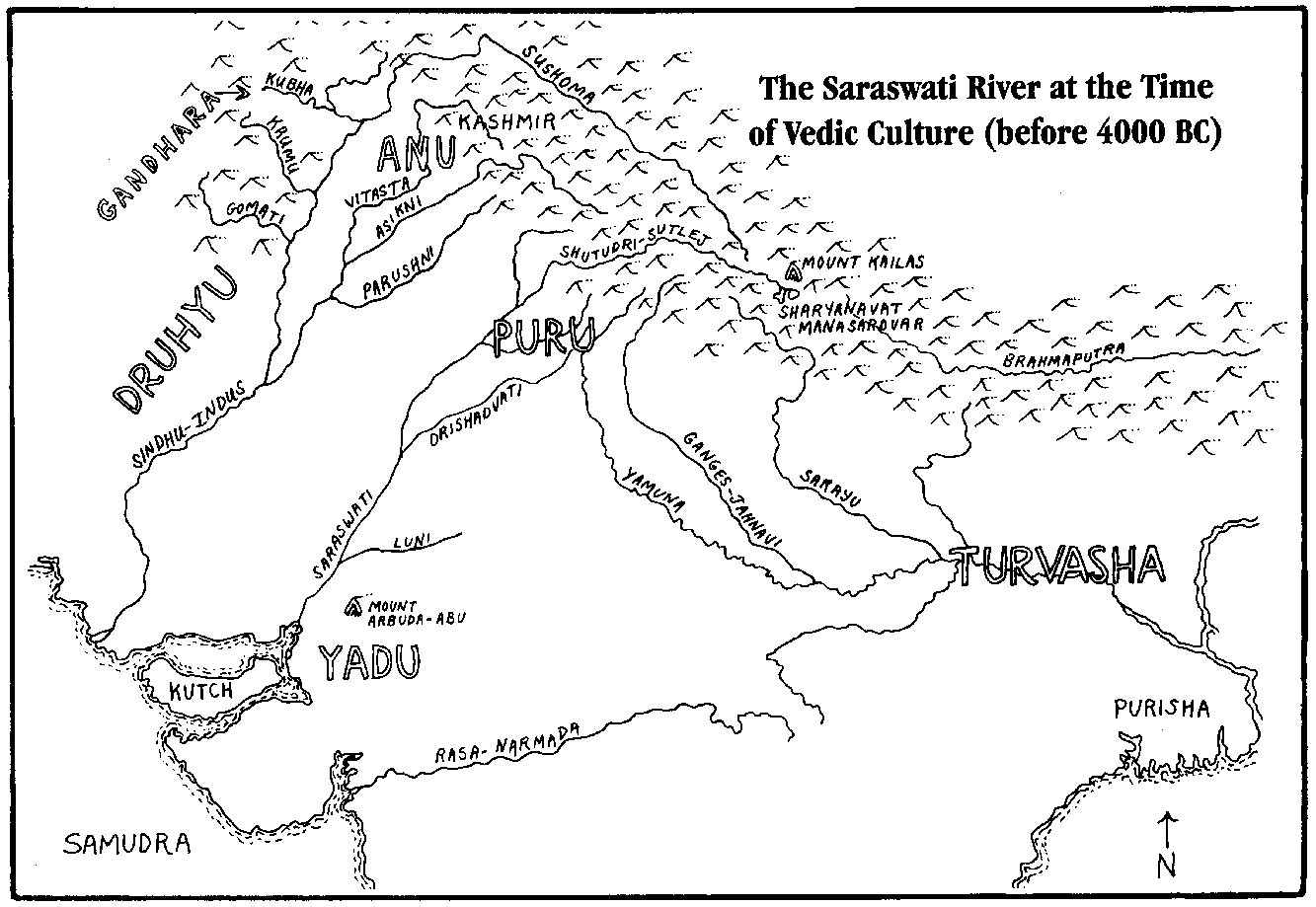
Having read on the Internet an article in Sunrise on the Mahabharata, I would like to bring to your attention a book I just read which relates to ancient India: Gods, Sages, and Kings: Vedic Secrets of Ancient Civilization by Dr. David Frawley. Although there are many books on this subject, this one was written with the international -- particularly American or European -- reader in mind, who has no previous knowledge of Hindu mythology or history.
In this work Dr. Frawley relates the history and mythology of almost all the ancient world to the Vedic culture which developed on the banks of the now dry Saraswati River. Geological, literary, and archeological data suggest that long ago this mighty river flowed from Lake Manasarowar in Tibet to the sea through present-day Rajasthan. Manasarowar is linked with Manu, the first man according to Vedic tradition. Leaving his golden ship on a high Himalayan peak after the great flood, he is said to have come down to the plains, carrying with him the seeds of life, in order to establish his kingdom on the fertile banks of the Saraswati. The author suggests there may be a linkage of this event with Plato's Atlantean deluge near the end of the ice age, while cautioning the reader that the boat or ark may be only a metaphor. Although this date may seem irrational from the viewpoint of accepted academic history, more and more archeological evidence from the Indus-Saraswati Valley civilization, geological evidence of the existence and fate of the Saraswati River, and astronomical dating of events recorded in the Vedas, show the antiquity of this ancient civilization. They also contradict the standard Western theory, formed in the 18th and 19th centuries, of Vedic civilization beginning with an Aryan invasion of northern India around 1500 bc.

The Indus-Saraswati Valley civilization is now found to be a collection of nearly 2,500 settlements of various periods along the Saraswati and other rivers, some of which date earlier than 6000 bc. These sites show sure signs of having cultural elements in common with later Vedic culture. The Indus script was first dismissed as imagistic, but has since been found to be very similar to the later Brahmi script, and is possibly related to early Semitic scripts from which the present-day alphabet developed.
The historicity of Vedic religion and its scriptures was once dismissed, in part because it praised very highly the supposedly mythical Saraswati River. Satellite and geological evidence show, however, that although the Saraswati changed its course many times over several thousand years before disappearing, long ago it was as described in the Vedas. Fortunately, some scholars are beginning to interpret history taking into account the geography of the region in the past. In light of new and growing evidence, an objective reexamination of existing data and reinterpretation of ancient history is necessary today.
(From Sunrise magazine, June/July 2000; copyright © 2000 Theosophical University Press)
World Spiritual Traditions Menu